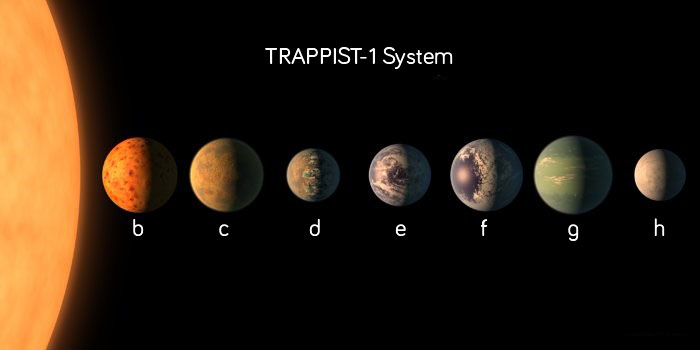Recently NASA have found the TRAPPIST-1 Solar System (named after the TRAnsmitting Planets and Plantisemals I Small Telescope). It is 40 light years away in the constellation of Aquarius and has seven Earth size Exoplanets (planets that orbit a star that isn’t the Sun) that have the potential to support life.
This is a big discovery as it is the largest amount of Earth sized planets ever found around a single star and it might help in the search for life on other planets. 
How did they find the TRAPPIST-1 Solar System?
- The Star in the centre of the solar system glows brightest in infra-red light which can’t be detected by the human eye
- The infra red light was detected by an infra red telescope called the Spitzer. This telescope is in space and follows the orbit of the Earth.
- The radiation (light) detected from the TRAPPIST-1 star would periodically dim and then brighten again; this could show that a planet could be passing in front of the star.
- The dips in light were not always the same amount, showing that there were actually seven exoplanets orbiting the star.
- NASA used the dips in radiation to calculate the size of each planet in the solar system.
- Space in between the dips in radiation means they can work out how it takes for a planet to orbit the star.
- The planets were found to be very close together with orbits that interfere with each other due to gravity.
- They used the estimated size of the planets to work out what the density of each planet is, to work out what the planet might be made of.
- All seven planets may be suitable of supporting liquid water, with three in the habitable zone capable of having oceans.

What next?
It’s really rare to find this many planets that may support life in one solar system so its important to find out more about them. NASA are going to use transmission spectroscopy to study the composition of the seven exoplanets. This is a technique that gives information about the chemical composition of a planet and whether a planet has an atmosphere.
They are using more telescopes to study some of the other ultracool dwarf stars (like TRAPPIST-1), to see if they also have exoplanets that could support life.
Another great article! Keep up the good work !